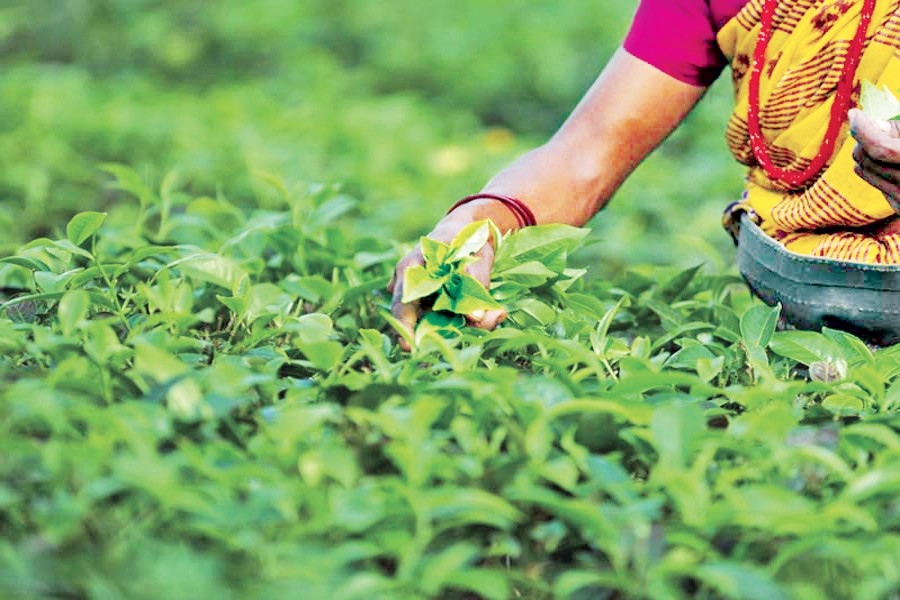The country's tea production declined by about 10 million kilograms in 2017 due to unfavourable weather conditions, tea sector insiders have said.
Bangladesh produced 85 million kgs of tea in the previous year (2016) which was the highest in the country's history.
This year heavy rainfall and inadequate sunlight hit tea production. Besides, fertilisers could not be applied properly due to excessive rainfall. The tea production target was earlier set at 90 million kgs for the year.
When contacted, Bangladesh Tea Research Institute (BTRI) Director Dr Mohammad Ali told this correspondent on Monday that due to foul weather, tea production stood at about 75 million kgs last year. It was the second highest in the country's history, he added.
The tea producing region experienced 3,744mm rain in 2017 whereas it was 2,517mm in 2016, an official at Bangladesh Tea Board said on Monday.
GM Shiblee, Sylhet branch (comprising greater Sylhet) chairman of Bangladeshio Cha Sangsad, said tea gardens experienced excessive rainfall this year. Besides, temperature was fluctuating, resulting in a drop in tea output, he added.
SM Ekramul Kabir, manager of Jaflong Tea Garden said, "We produced about 3.65 lakh kgs of tea against the target of 5 lakh kgs this year but it was 4.06 lakh kgs in 2016."
Humayun Kabir, manager of Khan Tea estate, said they produced 4.67 lakh kgs of tea against 4.98 lakh kgs in 2016. It is one of the eight tea gardens of M Ahmed Tea & Lands Company, which produced a total of 2.836 million kgs, a 10.74 per cent decline compared to the previous year's production.
Former General Manager of Bangladesh Tea Board's tea estate management cell Mohammad Shahjahan Akand said since almost 95 per cent of tea gardens lack artificial irrigation facility, they had to wait for rainfall. But it rained heavily, causing harm to tea plants in general, he added.
At the beginning of the tea producing season, almost all the seven tea valleys faced drought-like situation, but later they experienced heavy rainfall, Mr Shahjahan said. Tea plants in most of the gardens also got stunted due to soil saturation with rain, he said, adding that they also couldn't use fertiliser due to rain. There had been low temperature coupled with insufficient sunlight too.
There are 135 tea gardens in greater Sylhet region, one in Brahmanbaria, 22 in Chittagong region and seven in Panchagarh. Besides, about 200 small tea gardens, each on 1-5 hectares of land, have been set up in Panchagarh, Bandarban, and Thakurgaon in recent years.
Of 116,000 hectares of land of tea gardens, about 59,000 hectares are under tea plantation.


